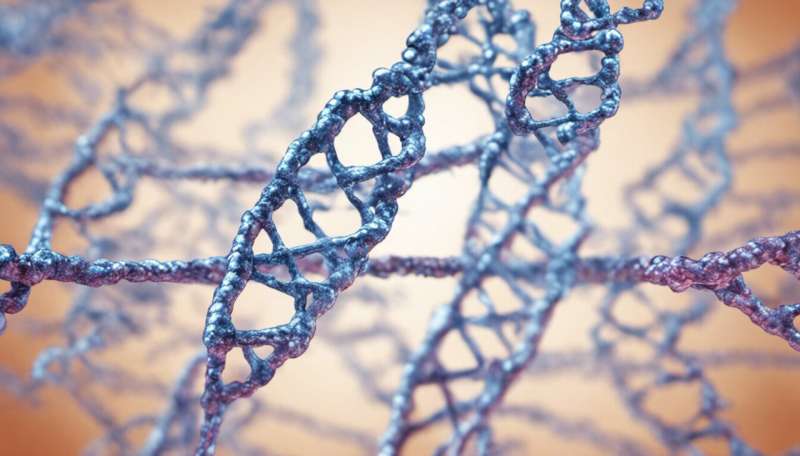Credit: AI-generated image (disclaimer)
(Medical Xpress)—Calories in, calories out. Any dieter is familiar with the two sides of the equation for weight loss, usually reduced to eating less and exercising more. But what controls the body's balance between burning fuel and storing it as fat? What tips the scales toward leanness and away from obesity?
Scientists led by Marcia Haigis, HMS associate professor of cell biology, have begun to answer those questions with their discovery of a new function for a protein in the cell's mitochondrion that coordinates the balance between fat oxidation (burning fat) and fat synthesis (storing it). Their experiments in mice led to a startling result: Mice engineered to lack the protein, called SIRT4, burned more fat, exercised longer and stored less fat than other mice, even when fed a high-fat diet.
The research, recently published in Molecular Cell, sheds new light on mitochondrial sirtuins and mitochondria. The powerhouses of the cell, mitochondria are also a hot spot for many human diseases, including cancer, obesity and diabetes.
The Haigis lab focuses on three mitochondrial sirtuins that orchestrate how the cell responds to its environment. SIRT3, SIRT4 and SIRT5 are less-studied members of a family of proteins that have been linked to caloric restriction and aging.
SIRT4 captured the attention of Gaëlle Laurent, the paper's lead author and a research fellow in the Haigis lab. She and others had shown that SIRT4 represses fat oxidation, but they didn't know how it happened. Laurent mapped out all of the metabolic pathways affecting fat metabolism, testing them biochemically one by one until she saw that SIRT4 binds to a particular metabolic enzyme called Malonyl CoA Decarboxylase. When SIRT4 targets the enzyme through a modification called deacetylation, it inhibits fat burning but promotes fat building.
"This is a first step in our mechanistic understanding of how SIRT4 affects lipid metabolism by modifying a little-understood enzyme," Haigis said. "SIRT4 really affects the balance between fat oxidation and breakdown or fat synthesis and storage by repressing Malonyl CoA Decarboxylase."
The results in mice lacking SIRT4 were dramatic, but Haigis is cautious about drawing conclusions about what appears to be protection from obesity. While the mice without SIRT4 had greater exercise capacity and had healthier weight compared to other mice eating the same high-fat diet, their glucose levels were just as unhealthy. The scientists concluded further studies are necessary to understand the complete role of SIRT4 in diabetes and obesity.
Many more questions remain, Haigis said. For example, there are likely many other protein targets for SIRT4. And it may be possible that SIRT4 interacts with other targets to bring about such a striking metabolic shift.
"It really highlights the central role of mitochondrial metabolism," she said. "The more we learn about these metabolic shifts in the mitochondria, the more it's like peeling back layers of an onion. We have more to learn, but what we know already touches a lot of areas of human biology."
More information: www.cell.com/molecular-cell/abstract/S1097-2765%2813%2900375-4
Journal information: Molecular Cell
Provided by Harvard Medical School






















